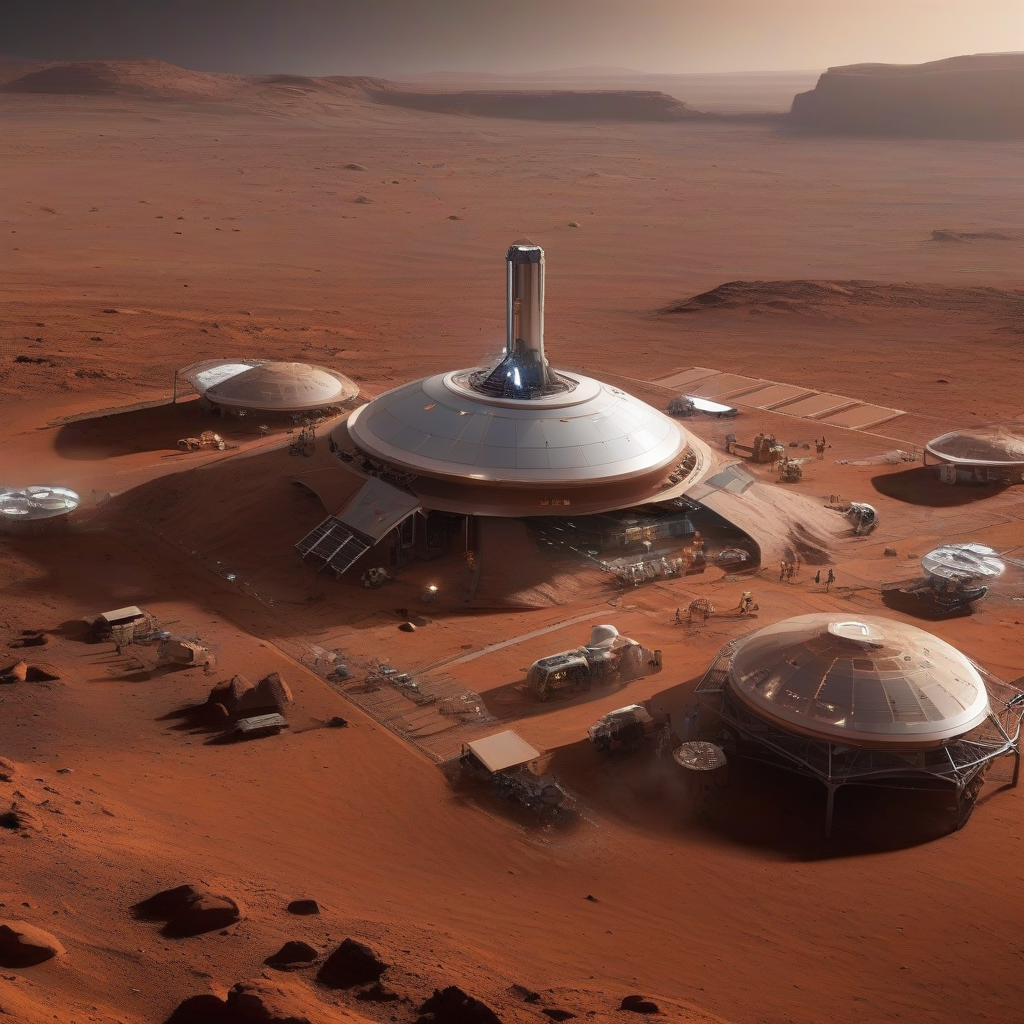# How SpaceX Plans Mars Settlement
The dream of creating a human settlement on Mars has long been a staple of science fiction, but SpaceX, led by its visionary founder Elon Musk, is working to make it a reality. With bold ambitions, cutting-edge technology, and a clear roadmap, SpaceX aims to transform Mars from a barren desert into a thriving hub for human life.
In this blog post, we’ll explore how SpaceX plans to make interplanetary migration possible, including the technological innovations, mission strategies, and challenges that lie ahead. This monumental effort isn’t just about reaching Mars—it’s about staying there, thriving, and ultimately ensuring humanity’s survival as a multi-planetary species.
---
The Vision for Mars Settlement
Mars is often called humanity’s "Plan B"—a backup for Earth in case of catastrophic events like climate change, asteroid impacts, or other existential threats. SpaceX’s mission isn’t just about survival, though—it’s about exploration, innovation, and the next chapter of human civilization.
Elon Musk has repeatedly stated that he envisions a self-sustaining city on Mars, complete with homes, schools, farms, and industries. The ultimate goal? A settlement capable of supporting one million people. This isn’t just a pipe dream; SpaceX is actively developing the tools and strategies to make it happen.
At the heart of this plan is Starship, SpaceX’s fully reusable spacecraft designed to carry cargo and humans to Mars. But Starship is just the beginning. Let’s break down how SpaceX plans to turn this ambitious vision into a reality.
---
Starship: The Backbone of Mars Exploration
The World’s Most Advanced Spacecraft
SpaceX’s Starship is the cornerstone of its Mars settlement plans. Standing at 120 meters tall, Starship is the largest spacecraft ever built and represents a leap forward in space technology. Its fully reusable design is key to reducing the cost of interplanetary travel, making Mars missions economically feasible.
Starship can carry 100+ passengers and over 100 tons of cargo per launch. This dual capability will allow SpaceX to transport both settlers and the supplies necessary to build infrastructure on Mars, such as habitats, power systems, and water purification facilities.
Testing and Development
SpaceX is moving quickly to perfect Starship. The company has conducted multiple test flights, including the Super Heavy booster, which provides the thrust needed to escape Earth’s gravity. While some tests have resulted in dramatic explosions, this iterative approach is rapidly improving the vehicle’s reliability.
The next major milestone is orbital testing, which will pave the way for launching Starship on interplanetary missions. SpaceX aims to use Earth-Mars transfer windows—periods when the two planets are closest in their orbits—to send Starship to the Red Planet.
Refueling in Space
One of Starship’s most innovative features is its ability to refuel in orbit. SpaceX plans to launch multiple Starships, with one acting as a "tanker" to refuel others before they embark on the long journey to Mars. This strategy minimizes the fuel carried during liftoff, increasing payload capacity and reducing costs.
---
Building a City on Mars
The First Missions: Establishing Infrastructure
The first crewed missions to Mars won’t involve settling right away. Instead, SpaceX plans to focus on building infrastructure to support future settlers. These missions will transport essential equipment, such as:
- Life support systems to generate breathable air and clean water.
- Solar panels to harness Mars’s sunlight for energy.
- Habitat modules to provide shelter from extreme temperatures and radiation.
- Mining equipment to extract resources like water ice for fuel and drinking water.
The goal is to create a foundation for long-term habitation, ensuring settlers can survive and thrive even without regular resupply missions from Earth.
Terraforming and Sustainability
Terraforming Mars—making it more Earth-like—is a distant dream, but SpaceX aims to enable sustainability in the near term through resource utilization. For example:
- In-Situ Resource Utilization (ISRU): SpaceX plans to extract carbon dioxide from Mars’s atmosphere to create methane fuel for Starship using the Sabatier reaction. This will make Mars missions more self-sufficient and reduce reliance on Earth-based resources.
- Hydroponic farming: Growing food in controlled environments will ensure settlers have access to fresh produce.
These strategies emphasize living off the land, a necessity for creating a self-sustaining settlement.
---
Overcoming Challenges
The Harsh Reality of Mars
While SpaceX’s vision is inspiring, the reality of Mars is daunting. The planet’s surface is a hostile environment with freezing temperatures, intense radiation, and a thin atmosphere
